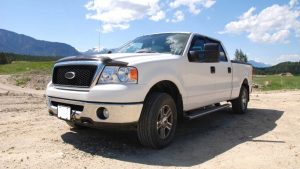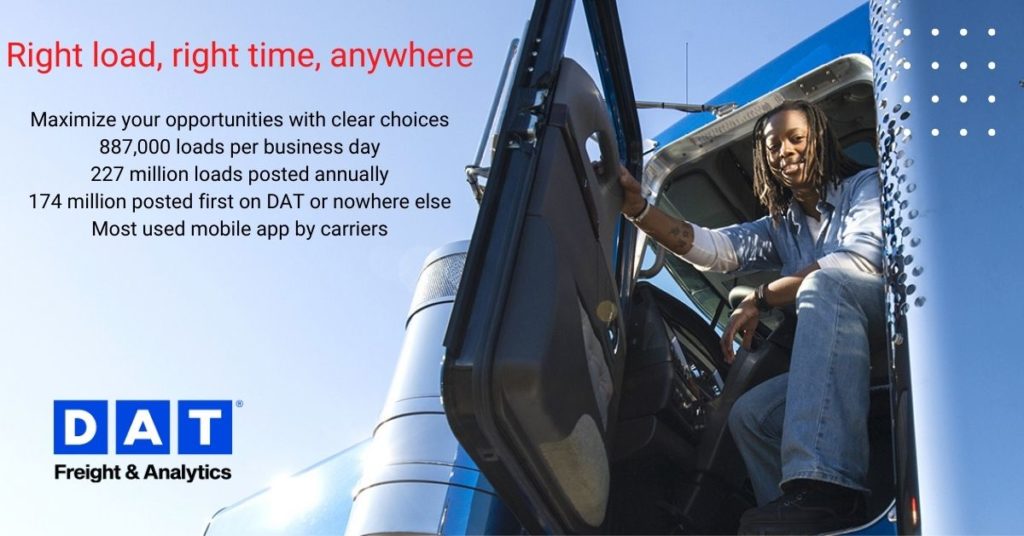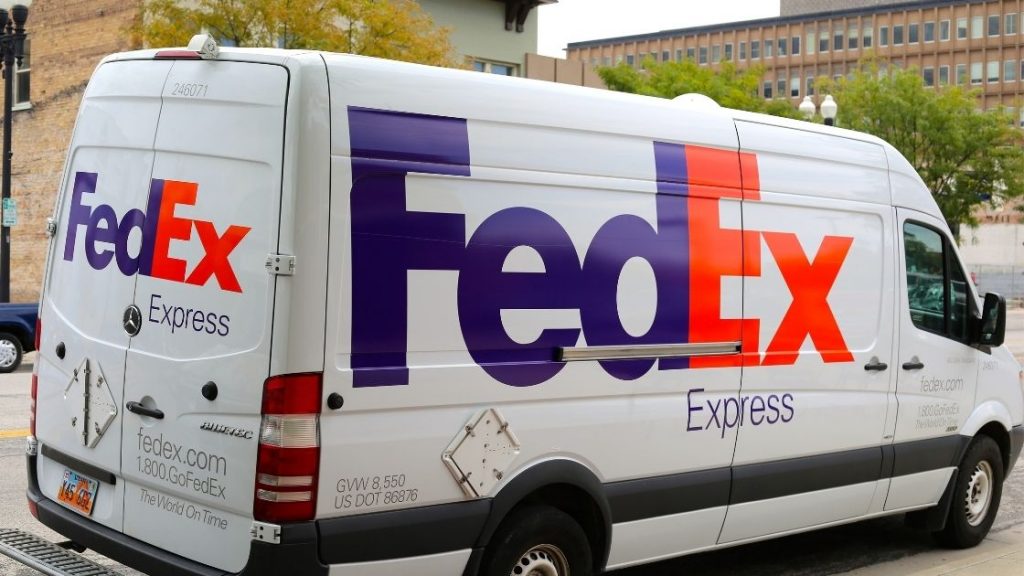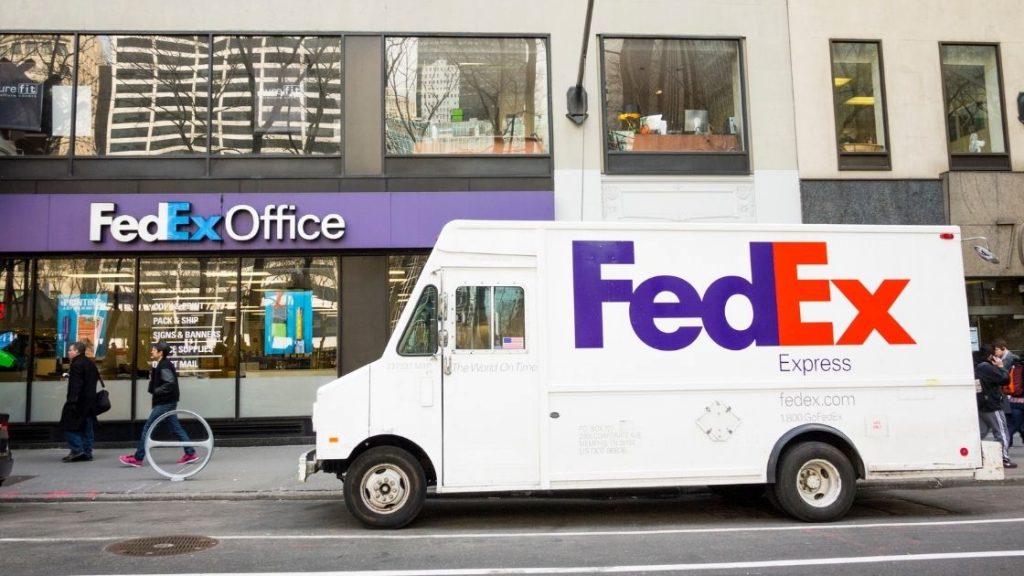If you are interested in starting a hot shot trucking business but don’t know where to begin, you are in the right place.
In this beginner’s guide, I will cover 7 essential steps to starting a hot shot business. Here’s a preview of each step that we’ll cover (of course, if you want to jump ahead to any of the individual steps, just click on the appropriate hyperlink below).
- Step 1: Establish Your Business
- Step 2: Fulfill General Trucking Qualifications
- Step 3: Create a Hot Shot Trucking Business Plan
- Step 4: Open Up a Business Checking Account and Credit Card
- Step 5: Obtain Funding and Buy Your Truck, Trailer and Equipment
- Step 6: Hire Drivers (If Needed)
- Step 7: Get Contracts (Loads) for Your Hot shot Trucking Business
Before we dive into the steps, I will cover some introductory questions you may have about the hot shot trucking business, including what a hot shot trucking business is, how much hot shot truck owners make, and how much it costs to get started.
If you want to skip the introductory stuff and jump ahead to the 7 steps, click here.
This post may contain affiliate links. If you click on a link and complete a transaction, I may make a small commission at no extra cost to you.
The information contained in this post is for informational purposes only. It is not a recommendation to buy or invest, and it is not financial, investment, legal, or tax advice. You should seek the advice of a qualified professional before making any investment or other decisions relating to the topics covered by this article.
What is a Hot Shot Trucking Business?

A hot shot trucking business is a business where you haul smaller loads (less-than-truckload or LTL) that are often critical and time-sensitive. For example, when construction companies need something urgently (i.e., a piece of equipment broke down, etc.), a hot shot trucker gets the job done quickly and on short notice.
These types of loads can provide some nice opportunistic extra income for the truck owner-operator or trucking business owner. Hot shot truckers deliver a wide range of cargo, including refrigerated items, manufacturing cargo, agricultural and construction equipment and materials, and much more.
Hot shot drivers typically operate heavy duty pick-up trucks with trailers, but can also drive larger vehicles. That being said, Class 8 semis are rare for hot shot loads and these vehicles are usually reserved for larger long distance loads.
How Much Money Can You Make with a Hot Shot Business?
Generally speaking, a well-run hot shot business can generate from $60,000 to $280,000 per year in gross revenue.
That is a wide range.
According to oversize.io, the range is between $60,000-$120,000. According to ltlrig.com, the average is around $4,500 to $5,500 per week, which translates to $234,000 to $286,000 per year.
Of course, that’s gross, so you probably want to cut that in half to get a sense of “take home” income. That’s because common expenses like fuel, maintenance, insurance, licenses and fees, tolls, etc. can eat up around 50% of gross revenue.
What Are the Start Up Costs for a Hot Shot Trucking Business?
One of the big advantages of a hot shot business is its relative affordability (at least compared to things like long haul trucking, which require you to own or lease semis that are much more expensive).
All you really need to get started is a heavy duty pickup truck and a decent-sized trailer. That being said, there are other costs associated with starting this business, such as registration expenses, insurance and equipment. We’ll cover all of this below.
Pickup Truck Costs
In general you will need at least the equivalent of a Ford F250. If you want more versatility in the types of loads you can accept, you may want to look into the equivalent of a Ford 450 or 550.
As of the time of this writing, a brand new F-250 starts at around $36,000. You can get new F-450 for about $52,000.
Of course, most people won’t be paying the full amount in cash. Financing and leasing options are also available, which can dramatically reduce your initial starting costs. Use this calculator to figure out approximate costs.
In you are willing to buy a used truck, you can pick them up at steep discounts. On Car Gurus, I found both F-250s and 450s starting well under $5,000. Of course, these are typically old, high mileage vehicles, so you should proceed with caution and make sure the cars are well-maintained and in good operating condition.
The pickup is going to be central to the operation of your business – you don’t want it breaking down all of the time.
Trailer Costs
Similarly, the type of trailer you should get for your hot shot business will depend on the types of loads you will be delivering, but gooseneck trailers are a popular option due to their cost and versatility. Other options include bumper pull trailers if your budget is more limited (they are smaller and less expensive).
If you want to specialize in heavier loads, you can consider lowboy trailers and tilt deck trailers. For automotive transport, you can look into 3 car haulers (either flat or dove tail) as an initial option.
You can get a new goose-neck 40-ft flatbed trailer (the longest and most versatile gooseneck trailer) for around $20,000. Financing options are also available, which can significantly reduce your start up costs.
Used trailers are also readily available. For example, you can explore a pretty wide selection of used gooseneck trailers at trailer trader. I have seen examples for well under $10,000. They also carry many other types of trailers, so you can check them out if you want to specialize in automotive loads or other specialized loads.
Equipment Needed For Hot Shot Trucking
You will need chains, binder, tie-downs, bungees, straps, and other miscellaneous items to secure your freight to your trailer. Approximate cost for these items is around $1,000.
Registration Fees and Insurance
As we will get into later on, there are some significant legal and other requirements to starting a hot shot business. You will need to pay fees for certain registrations and secure appropriate insurance for your business. These are not insignificant. Check out the below estimates for these types of costs.
- Registration (FMCSA, BOC-3, Unified Carrier Registration, Home State DOT, ELD, Others): Est. $1,000
- Insurance: $3,500 – $4,000 downpayment with monthly payment of about $1,000
Closing Thoughts:
Ok, now that we’ve covered the introductory stuff, let’s dive into the details on how you can start your hot shot trucking business.
Step 1: Establish Your Business

Set Up Your Business Entity
You may want to set up a business entity like an LLC, corporation, or partnership for your hot shot trucking business. Why do this? In most cases, setting up a business entity can help shield some of your assets held outside the business entity if there is a claim against the business.
If you want to make the investment of setting up a corporation, LLC, or some other business entity, you can hire a lawyer to help you, or you can use many of the online resources that can help you set up your business entity.
I like Northwest because they can get you up and running quickly and easily. They are also one of the most affordable options that I was able to find that still offered great customer service ($39 as of the date of this article).
According to their website, they are the only national registered agent service that lets you use their office address so you don’t have to use your own. That’s a killer privacy advantage.
Definitely worth checking out.

Step 2: Fulfill General Trucking Qualifications
Before you go too deeply into exploring a hot shot trucking business, you need to ensure that you will be able to meet all of the physical, legal and other requirements for the business. Here are the basic requirements:
DOT Medical Card
In general, you will need to pass a Department of Transportation (DOT) physical and receive a medical card. This signifies that you are physically capable of handling the work required for this type of activity.
Commercial Drivers License (CDL)
Not all hot shot loads require a CDL, but if you don’t have one already, you will need one if you plan on operating vehicles that meet or exceed certain weight thresholds. According to the Federal Motor Carrier Safety Administration (FMCSA), you will need a CDL under the following conditions:
You operate in interstate, intrastate, or foreign commerce and drive a vehicle that meets one or more of the classifications of a CMV described below:
Class A: Any combination of vehicles which has a gross combination weight rating or gross combination weight of 26,001 pounds or more, inclusive of a towed unit(s) with a gross vehicle weight rating or gross vehicle weight of more than 10,000 pounds.
Class B: Any single vehicle which has a gross vehicle weight rating or gross vehicle weight of 26,001 pounds or more, or any such vehicle towing a vehicle with a gross vehicle weight rating or gross vehicle weight that does not exceed 10,000 pounds.
Class C: Any single vehicle, or combination of vehicles, that does not meet the definition of Class A or Class B, but is transporting material that has been designated as hazardous under federal law.
If you want more info on CDL requirements, check out the FMCSA page on the topic.
Get Your Trucking Authority (USDOT Number and Motor Carrier (MC) Number)
If you don’t have your own trucking authority already and are interested in getting one for your hot shot business, there are some significant requirements you need to fulfill.
According to the FMCSA, if you are plan on engaging in interstate commerce (delivering across state lines) and your vehicle meets certain weight requirements then you will need a USDOT Number. Many states also require you to have a USDOT number even if you are only engaging in intrastate commerce in that state.
In addition to getting your USDOT, you will need a MC number. Again, this only applies if you plan on engaging in interstate commerce, you don’t own the freight you are transporting, and you will be receiving a fee for providing such transport. For more details on MC numbers, check out the FMCSA website on the topic.
Getting your own authority is a fairly extensive process so you should be prepared for that. Again, you won’t need it if you stick to loads that don’t meet these requirements. Of course, you could also choose to “lease on” your truck to another company that has their authority already and avoid these requirements, but you won’t make as much.
Motor Vehicle Record
Although not critical, it is a good idea to pull a motor vehicle record so you know your driving record. Insurance companies will want to know. The good news is that it doesn’t cost much to get and obtaining one should be a pretty straightforward process.
Step 3: Create a Hot Shot Trucking Business Plan
During the course of getting your preliminary requirements in order, you should be developing a business plan. A business plan is essentially a roadmap for your hot shot business.
It organizes your thoughts relating to your business into an actionable plan. Some things to include in your business plan are figuring out expected income (including how you will set prices), calculating expected costs, identifying how you will get loads, operational plans (will you hire drivers, etc.), and growth projections.
Don’t stress too much about getting your business plan perfect. I would use it more as an organizational tool at this point. You can polish it up later if you need to.
Another benefit of having a business plan is that it can help you raise money from banks and investors (if your business has high starting costs, you may need to get some financing right away). This is when you will need to refine your business plan – these folks will want to see a professional-looking business plan as part of their lending or investing process.
Don’t know how to get started? The Small Business Administration has a great tool to help you write your business plan.
Step 4: Open Up a Business Checking Account and Credit Card
You should open a dedicated checking account in the name of your hot shot trucking business (assuming this is going to be a standalone business and not part of your existing trucking business).
Make sure to run all business revenue and expenses (and only business revenue and expenses) through that account. This is especially important if you have a formal legal entity like a corporation or LLC because you do not want to mingle personal assets and expenses with business assets and expenses.
Why? Keeping this separate will help with liability protection and having a separate account keeps things tidy from a recordkeeping and accounting perspective.
If you don’t know where to get started, check out Novo.
They are perfect for new small businesses because they offer no monthly fees or minimum balances, and give you unlimited ATM fee refunds. On top of that, they give you access to tons of other free perks, like major discounts on places like Stripe, Quickbooks and Google Ads.
In my opinion, they are one of the best options in the market.

Now, let’s turn to business credit cards. Credit cards can be really helpful to a new hot shot truck business, especially if an expensive repair pops up!
First, they are often easier to qualify for than a line of credit, especially when you are a brand new business. Even if you don’t need to use it right away, it’s nice to have the funds available in a pinch. Second, it’s a great way to build your business credit rating, which will come in handy if you need to apply for a loan in the future to expand your business, etc.
Finally, you get to enjoy the benefits of points, cash back or other rewards that may come with owning your business credit card. However, just like your business checking account, avoid intermingling business expenses with personal expenses on your credit card.
Step 5: Obtain Funding and Buy Your Truck, Trailer and Equipment

As we covered already, starting a hot shot trucking business can be costly, especially if you plan on buying a new pickup truck and trailer.
Fortunately, there are a lot of financing options available for both the truck and trailer. And of course, you can choose to reduce your costs by buying used.
That being said, you will still need some money to get started.
Want some ideas on how to get that seed money? Check out these options:
- Personal savings. You will often need some skin in the game before lenders will work with you, so having some personal savings is important.
- Credit Cards. Due to high interest rates, credit cards are probably not an ideal choice, but if you can snag a 0% teaser rate on a credit card, you can put some of the start-up costs onto that card at a ultra low interest rate (at least until the teaser rate period expires). Try to get one that lasts at least a year so you have some time to get your business off the ground.
- Friends and family. Although these people may be willing to lending you money, you have to weigh that against the risk of souring your relationship with them if things go sideways.
- Banks. Banks are a traditional source of funding for new businesses, but they will often conduct extensive due diligence and underwriting before lending to a brand new enterprise.
- Online Funding. This includes includes getting a loan using peer-to-peer lending, funding through kickstarter campaigns, using online lenders, etc.
Once you have secured funding (and satisfied your licensing, registration, and other trucking requirements), you should go ahead and get all of the necessary equipment for your business, including the truck, trailer and miscellaneous equipment.
We covered costs earlier, so you can use that information as a starting point to figure out how much total funding you will need.
Step 6: Hire Drivers (If Needed)
Not every hot shot business will need employees in the beginning. If you are going to be an owner-operator, then you can run your own loads without any other drivers. But if you are not going to be driving or want to position your business for growth as soon as possible, you will want to hire qualified drivers.
If you are already a driver in the industry, you should know people already who can fit the bill, but if not, no worries. Here are some tips to recruit drivers:
- Have a very clear idea of what the job requires and write a comprehensive job description. If you have clean driving requirements, or other requirements, clearly list them.
- Cast a wide net to get candidates – post the job online and through local venues, ask around for referral candidates, etc.
- Interview promising candidates and select them based on their qualifications (you need to make sure you do not discriminate on a prohibited basis, like race, color, religion, sex, etc. during both the interview and hiring process).
- Make sure you have the right infrastructure in place to manage payroll. There are tons of payroll administration providers who can take care of the legal and other requirements to make sure you handle the withholding and payment process without issues.
There are tons of payroll service providers out there, so go with someone who is reputable and offers a fair price. I use SurePayroll for my business. They are affordable, reliable and a well-known player in this space.
Step 7: How to Get Contracts (Loads) For Your Hot Shot Trucking Business
One of the things you absolutely need to get right is getting consistent and profitable contracts (or loads) for your hot shot business.
Here are some practical strategies you can use to get them.
Load Boards
One of the most common methods for getting loads is signing up for load boards. These are generally online boards that list loads for delivery that you can access. Many (but not all) charge a fee to use them.
The leading load board out there is DAT.
Because of their size and scope, they are able to offer leading edge tech and info, including unlimited searching, instant alarm match notifications, broker credit scores and days to pay, market rates, mileage routing and much more.
I have an affiliate relationship with them and secured a deal where if you use my link, you can get a free 30 day trial with full access to their network and features. So, you get to try out the leading load board for a full month for free. I would note that this deal is only for new subscribers.
If you are interested, just click below to take advantage of this no-risk offer.

Other general loads boards include Truckstop.com., and Trucker Path. There are also load boards that specialize in hot shot deliveries, such as uship, and hotshotcarrier.
If you want even more load board options for your hotshot trucking business, check out my article that lays out 9 free and paid options.
Develop Contacts with Companies
Load boards are probably the best way to get a consistent and steady stream of hot shot loads, but you can also pound the pavement and start talking with local companies who may need hot shot deliveries from time to time. Construction companies, manufacturing businesses, and businesses in the medical industry can all be good candidates.
If you prove yourself reliable, they will continue to use you and may recommend you to others. In most cases, the volume won’t compete with what you can find on load boards, but every extra bit can help you make more money.
Conclusion
So there you have it – 7 steps to starting a successful hot shot trucking business.
If you want to learn about more ways to make money with a pickup truck, check out my article showing 9 different strategies you can use to make money with your pickup.
If you want to learn more about transportation businesses in general and are looking for inspiration, take a look at my ultimate guide to transportation business ideas here. I discuss over 30 business ideas that you can start in the transportation industry (with helpful info and tips on how to begin).
We cover businesses you can start with semi-trucks, box trucks, dump trucks, cargo and passenger vans, pick-up trucks and even regular old cars. So whatever your budget and experience, there will be ideas that can work for you.

